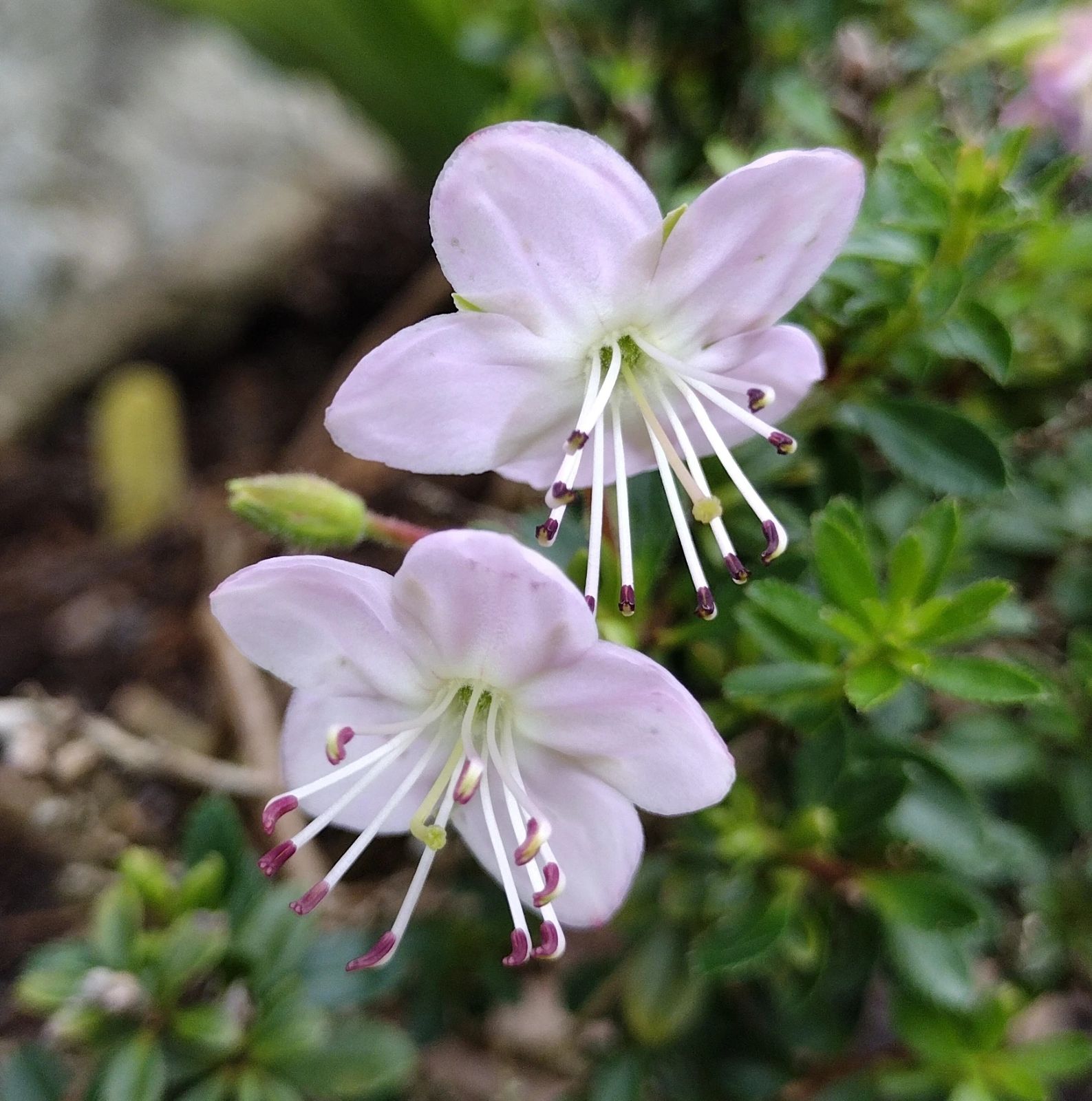Rhodothamnus chamaecistus
Credits
Article from Bean's Trees and Shrubs Hardy in the British Isles
Recommended citation
'Rhodothamnus chamaecistus' from the website Trees and Shrubs Online (treesandshrubsonline.
Genus
Synonyms
- Rhododendron chamaecistus
Other taxa in genus
A low or semi-prostrate evergreen shrub, rarely more than 1 ft high; young shoots minutely downy, but almost hidden by the closely set leaves. Leaves almost without stalks, narrowly oval, 1⁄4 to 1⁄2 in. long, half or less than half as wide, tapered at both ends, edged with conspicuous bristles, otherwise glabrous and glossy green on both sides. Flowers produced during April at the end of the twigs, two to four in each cluster. Corolla pale, clear rose, spreading, 1 to 11⁄4 in. wide, the five lobes ovate, rounded half as deep as the corolla; calyx 1⁄2 in. wide, the five lobes linear-ovate, pointed, covered like the stalk (which is 1⁄2 in. long) with gland-tipped hairs. Stamens ten, glabrous, 1⁄2 in. long; anthers very dark purple. Seed-vessel globose, hairy, many-seeded, with the sepals persisting at the base.
In the words of Reginald Farrer, R. chamaecistus is ‘the joy and glory of the Dolomites and all the South-eastern limestones’. Its south-western limit is in the Bergamo pre-alps, east of Lake Como; in the north-west it reaches into southern Bavaria; its eastern limit is in Slovenia and Lower Austria. It is absent from Switzerland.
Farrer contrasted this lovely species with ‘the coarse and clownish Alpenrosen’, and indeed there is no Sino-Himalayan rhododendron that surpasses it in elegance or in purity of colouring. It is uncommon in cultivation and often reported to be difficult, though it has thrived and flowered profusely on rock gardens in soils ranging from pure peat to mortar rubble. It needs a sunny position, but artificial protection may have to be given in spring to save its flowers from destruction by frost. Plants dug up in the wild (illegally, for the species is protected) are difficult to establish. Cuttings taken in late summer can be rooted, though not readily. Seeds provide another means of increase; they ripen very quickly – by midsummer – and are said to germinate best in full light.
The second species of Rhodothamnus is R. sessilifolius P. H. Davis. Surely one of the most remarkable plant discoveries of recent years, this species was found growing in N.E. Anatolia within the area of the relict species Orphanidesia (Epigaea) gaultheriodes and was described in 1962. It is closely allied to R. chamaecistus, though separated from it by a distance of almost 1,500 miles.

